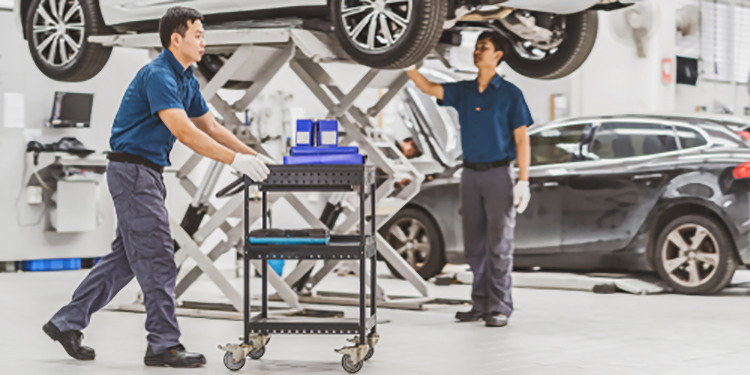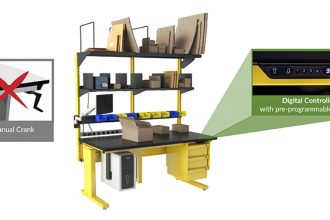Ergonomic Considerations When Specifying Wheel And Caster Brakes For Manual, Cart-Based Load Handling

When specifying the design of a new manual material handling cart (or assessing the suitability of retrofitting an existing cart), operations managers and facility owners typically consider “push-pull” requirements when assessing the ergonomics of a potential solution. Sometimes overlooked, however, is the need to safely control a cart in motion, as well as to prevent unwanted motion. The answer is to integrate brakes that can slow, stop, and/or hold a loaded cart after it reaches its destination.
Wheels and casters have evolved considerably over the last 30 years, notably through advances in tread materials and bearing construction that ensure they begin — and continue — to roll smoothly and easily with minimal pushing force in a given application. Conversely, braking system designs haven’t come quite as far. That’s why it’s important to think about how a loaded, moving cart will be stopped before an accident occurs.
As physics tells us, carts carrying larger, heavier loads on wheels engineered to spin with less resistance will need more force to stop them than carts bearing lighter loads. Yet, the majority of wheel and caster braking systems are designed solely to hold a stopped cart in position, not to slow down a moving one.
Therefore, when considering brakes, be sure to do the following:
- Think about their intended function. Are they meant to prevent accidental motion caused by an accidental bump, or to help control the load when it’s moving?
- Assess their operation. How easy or difficult it is to access or engage the brakes when the cart is in use, both in a normal situation or in the event of a runaway cart?
- Look at the surroundings. How resilient (or fragile) are the area and equipment in proximity to the carts’ operation? Can they withstand a collision from a moving cart, or would an impact cause significant (and expensive) damage and downtime?
- Weigh costs against risks. While adding brakes does contribute to the overall cost of a cart design, be sure to factor in the potential costs associated with an accident or injury (lost productivity, downtime, Worker’s Compensation, insurance increases, facility damage, product damage, etc.) when evaluating the options.
For those seeking ergonomic braking systems that slow down and stop a cart, different solutions are available. Some brakes are connected by cables to an ergonomically designed, hand-operated lever (usually positioned at waist-height on one of the cart’s narrow ends); squeezing the lever engages the brake to slow, then stop, the cart. For carts traveling up and down inclines, similar braking systems are offered with the reverse function. These require the lever to be hand-engaged to release the brakes and permit the wheels to turn; releasing the lever immediately activates the brakes to stop the cart in case of a loss of control.
For those looking to utilize brakes on casters and wheels to secure a load at rest, the majority of them are foot-activated and are engaged by the operator after the cart has been stopped. The brake makes contact with the wheels to prevent them from rolling. Designs include a brake integrated into the wheel or caster; a pedal located on the end of the cart; or a swivel device mounted on the operator’s end that is pushed to rotate in and lock the wheels when the cart is stopped and released in the opposite direction for movement.
Regardless of the type of braking system selected, the slowing and stopping of any cart’s movement will still require a degree of manual exertion. Therefore, to ensure the operator’s safety and reduce the risk of injury, never overload a cart beyond its maximum capacity. Further, pay attention to any inclines or declines over which a manually maneuvered cart will travel; a worker pushing or pulling a cart over a slope with a load that is too heavy can easily lose control, potentially harming the operator, other personnel, equipment or facility structures in the area.
Looking for more ideas to improve your workplace ergonomics? The members of the Ergonomic Assist Systems & Equipment (EASE) Industry Group of MHI offer a library or resources for free download, here.



